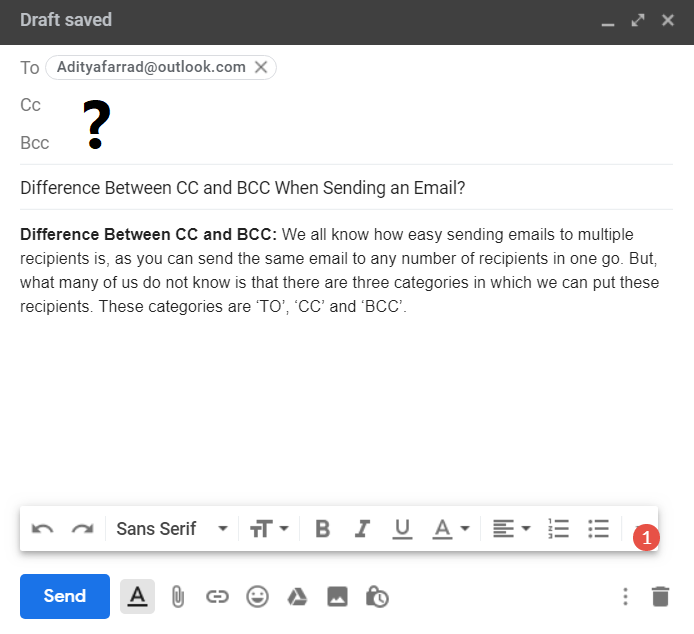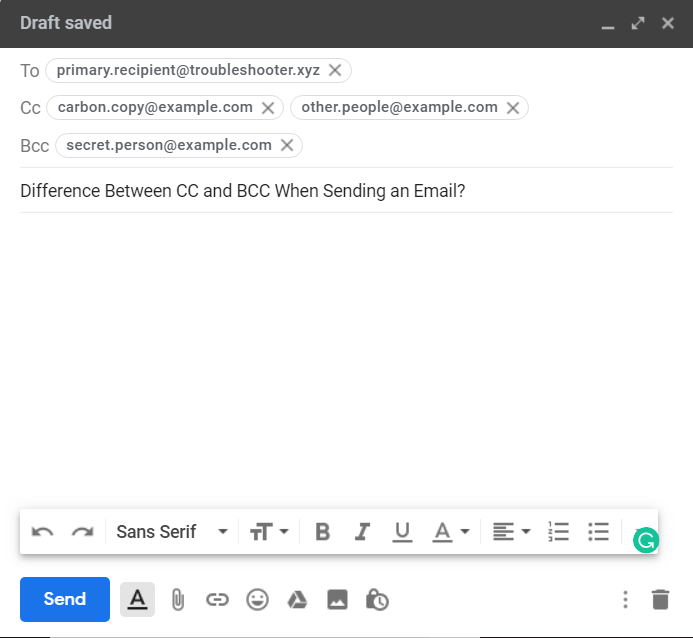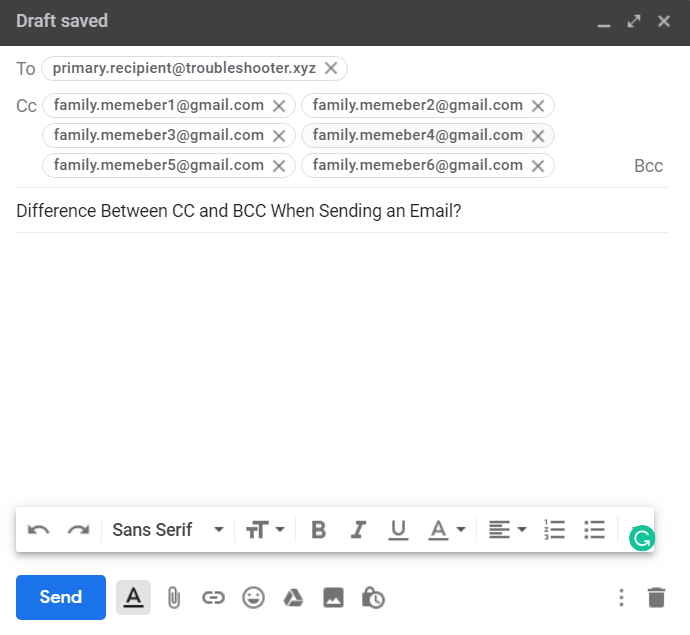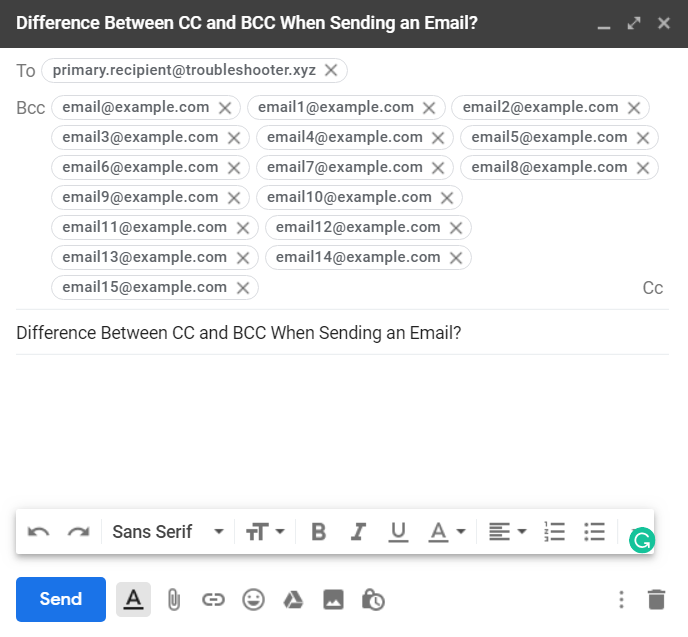Difference between CC and Bcc: We all know how easy it is to send emails to multiple recipients as you can send the same email to any number of recipients in one go. But, what many of us do not know is that there are three categories in which we can put these recipients. These categories are "TO", "CC" and "BCC". The common thing among recipients in these categories is that regardless of the category, all recipients will receive the same copies of your email. However, there are certain differences in visibility between the three. Before moving on to the differences and when to use which category, we need to understand what CC and BCC are.
What is the difference between CC and Bcc in an email?
What are CC and BCC?
When composing an email, you generally use the "To" field where you add one or more email addresses of the recipients to whom you want to send the email. On the right side of the "To" field in Gmail, you should have noticed "Cc" and "Bcc".
Here, CC means $0027 Carbon Copy $0027. Its name is derived from how carbon paper is used to make a copy of a document. BCC means $0027 Blind Carbon Copy$0027. Therefore, both CC and BCC are the ways to send additional copies of an email to different recipients.
Visibility differences between TO, CC and BCC
- All recipients in the PO and letter of credit fields can see all other recipients in the PO and letter of credit fields that have received the email. However, they cannot see the recipients in the Bcc field who have also received the email.
- All recipients in the Bcc field can see all recipients in the OT and CC fields, but cannot see other recipients in the Bcc field.
- In other words, all TO and CC receptors are visible to all categories (TO, CC, and Bcc), but Bcc receptors are not visible to anyone.
Consider the recipients given in the TO, CC, and BCC fields:
TO: recipient_A
CC: receiver_B, receiver_C
Bcc: receiver_D, receiver_E
Now when they all receive the email, the details visible for each of them (including recipient_D and recipient_E) will be:
- Email content
- From: receiver_name
- TO: recipient_A
- CC: receiver_B, receiver_C
Thus, if the name of a recipient does not exist in the TO or CC list, it will automatically know that a blind copy has been sent to it.
Difference between TO and CC
Now, you might think that if TO and CC are able to see the same set of receivers and are visible to the same receivers, is there even any difference between them? So for Gmail, there is no difference between the two fields because the recipients of both fields receive the same email and other details. The difference is created by the decorum of email generally used. All those recipients who are the main target and are supposed to take some kind of action depending on the email are included in the TO field. All other recipients who need to know the details of the email and are not expected to act on it are included in the CC field. In this way, the TO and CC fields together resolve any confusion about who the email might be directed to.
Likewise,
- TO contains the primary audience for the email.
- CC contains the recipients that the sender wants to know about the email.
- The CCO contains the recipients who are being secretly informed about the email so that they remain invisible to others.
When to use CC
You should add a recipient in the CC field if:
- You want all other recipients to know that you have sent a copy of the email to this recipient.
- You only want to inform the recipient of the details of the email but do not require them to take any action.
- For example, the head of a company responds to an employee's leave request and also adds the employee's immediate supervisor in the QC field to inform him about it.
When to use CCO
You must add a recipient in the Bcc field if:
- You do not want any other recipient to know that you have sent a copy of the email to this recipient.
- You are responsible for maintaining the confidentiality of all your customers to whom email is sent and you must not share your emails with others. Adding all of them to the Bcc field therefore will hide them all from the others.
Note that a Bcc receiver will never receive any response from another receiver because no one knows about the Bcc receiver. But, a Bcc recipient may or may not receive a copy of the response depending on whether or not the respondent has added it to the Bcc field.
Clearly, all three fields have their own particular uses. Proper use of these fields will help you write your emails more professionally and you will be able to target different recipients differently.
I hope this article was helpful and that you can now easily tell the difference between CC and Bcc in an email, but if you still have any questions about this guide, feel free to ask them in the comment section.










